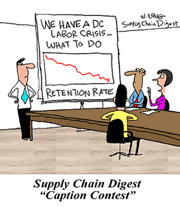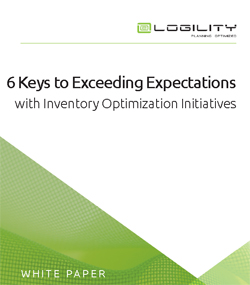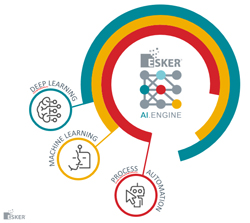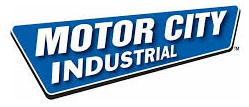Trip Report - CSCMP Edge 2018 in Nashville Part 2
As promised, I am back this week with part 2 of my trip report on the CSCMP EDGE annual conference last week in Nashville. You can find part 1 here, which focused on the conference overall and the keynote sessions. That included on outstanding presentation from the CEO of a company called Zipline on the use of commercial drones in Rwanda, which has changed my whole outlook on drones.
This week, highlights from the top three breakout sessions I attended.
| GILMORE SAYS: |
Blizzard of Bridgestone made the smart observation that in this environment, business leaders may be more open to policy and process changes, such as increase order minimums.
WHAT DO YOU SAY?
Send us your
Feedback here
|
The first breakout session after the opening general session was a panel discussion of carrier CEOs. There was a similar panel at the 2017 conference that I did not attend, and my friend Mike Regan of TranzAct Technologies said I really missed something, so I made it this year - and I am glad I did.
Panelists include well-known Derek Leathers of Werner, Darren Hawkins of LTL carrier YRC Worldwide, and Tom Connery of New England Motor Freight, with the discussion moderated by my friend Brian Gibson of Auburn University.
I'll begin in a sense with the end: towards the close of the conversation, Gibson asked each CEO to list their top three concerns.
The results:
Leathers: drivers, regulations, infrastructure.
Hawkins: drivers, technology, and the impact of ecommerce on the LTL sector.
Connery: drivers, technology, and customer service.
You get the idea - it's all about drivers right now. The panel admitted that some of the warnings about the driver shortage a few years ago may have been just a bit premature, causing some shippers to be a bit dubious of the true state of affairs, but said there is no question drivers are a huge problem right now.
Hawkins made the point that much of the current crisis is being driver by retirements, as a large cohort of baby boomers drivers hits retirement age.
While Connery said nice new trucks and other accommodations might keep a driver a year or two longer than otherwise would be the case, the always interesting Leathers noted that in general increased driver pay, which all these carriers are doing, isn't going to stop many retirements. So you have a structural issue that goes beyond even pay and lifestyle, with no clear answer.
Leathers, however, cited research from ATRI that estimated that congestion on US roads and highways requires the equivalent of 360,000 extra truck drivers, while the current driver shortage is estimated at a much smaller 63,000 by the ATA.
Women drivers is another potential answer, with women representing just 6% or so of US drivers today - but will be 13% by year's end at Werner after a few years of focus on this opportunity.
Finally, and interestingly, none of the CEOs is bullish at all about autonomous trucks in the short to mid-term. In fact, they said that carriers are not asking for autonomous trucks - the push is almost all from the truck OEMs. My theory: this is stemming from a combination of concern about safety - and also a concern about driverless trucks commoditizing freight movement.
The CEOs are bullish though on driver assist and platooning technology, and also on electric trucks, at least for routes of less than 350 miles per day.
Leathers also noted that the tremendous gains in the efficiency of traditional diesel truck engines have really changed the dynamics relative to natural gas trucks, which once looked poised to take over the market. Now - not so much.
It's hard to believe that it's been 20 years since then Gartner analyst Art Mesher first created his now famous 3 Vs of supply chain framework, with those Vs of course being visibility, variability and velocity. Mesher has written a new paper updating his thinking on the 3 Vs for 2018, and it is available for free on the CSCMP web site - I will be summarizing it soon and doing a video interview with Mesher.
In a breakout session in Nashville, Mesher said the visibility part has become table stakes - you have to have it to compete effectively. Variability is here to stay and getting worse - the key is harnessing it for competitive advantage. The game will be won, Mesher said, through velocity - which companies can reconfigure their supply chain networks and execution most rapidly to react to ever changing requirements and threats.
As a result, he also sees fewer long term partnerships, and more temporary relationships to meet needs for some finite period of time.
Mesher also said very few companies have really thought through their policies relative to supply chain data, who owns what, what data can be shared or when, and how the intellectual property baked into that data can be best leveraged.
I also liked this - Mesher said while everyone focuses on Amazon's rapid delivery and last mile strategies, the real power is its control of the "discovery" process - what products, and what price points, are presented when you search for say a waffle iron. Amazon controls all of that. You can't sell your stuff if the consumer can't find you.
Wednesday as usual was a short day, with as has now been the case for a number of years the day starting with a choice of three 90-minute "megasessions," though with regular breakouts now running 75 minutes, I am not sure that term is really appropriate.
I started with a session on transportation management systems, which within a few minutes appeared to me to be mostly a commercial exercise, and switched over quickly to a panel discussion with three senior transportation managers, nominally on connecting transportation with the C-suite. That turned out to be a good choice.
The panelists were Brad Blizzard of Bridgestone Americas, Jennifer Kobus of Ultra Beauty, and Michael Nasif of Kohler, along with Tim Dalton of TMS provider Bluejay Solutions. It was a good discussion. Here are some highlights:
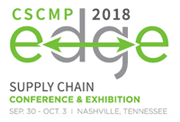
In general, not surprisingly of late all said there is obviously much greater interaction with business unit leaders and/or CEOs and CFOs. There in general is no lack of data to describe to these execs what is happening in the market - the key, the panelists agreed, was choosing the right level of data and connecting with each exec's own issues, which can differ by role or business unit.
So Bridgestone, for example, sells $60,000 mining tires. It turns out that business isn't all that worried about spending an additional $500 for a move to ensure customer service.
Nasif noted that in negotiations these days, carriers are often bringing their pricing execs into calls to play the "bad " role, leaving the account managers largely out of it. Bridgestone also said it is getting more surgical with carriers in its lane analysis - that after one carrier fired the company for 50 lanes it was handling after determining they did not fit well with its network.
Kobus made point about some risks from procurement being involved in the sourcing process. It can add value - but also time. In Ultra's case, those extra weeks in the process in this environment resulted in some carriers coming back with higher rates and other de-committing from some lanes versus their original bids.
Shippers are looking anywhere they can for relief. Kohler for example is expanding its private fleet from 75 tractors to 100, finding it is getting lower costs and better service there.
Kohler and Ultra are both piloting some dedicated fleet operations, with Kohler saying it was also looking more closely at smaller and regional carriers, with Nasif saying he thought it possible some smaller carriers might go lower on rates if it could lead to a big jump in total revenue.
Blizzard of Bridgestone made the smart observation that in this environment, business leaders may be more open to policy and process changes, such as increase order minimums, that can reduce transportation costs, whereas they may have been reluctant to change such rules in normal times.
I attended other breakouts , but these were the top three.
Hope you enjoyed this summary. Again, I will happily be back for CSCMP 2019 next year in Anaheim.
Did you go to CSCMP 2018? If not, why not? If yes, what are your thoughts on the conference? Any reaction to Gilmore breakout summary? Let us know your thoughts at the Feedback button below.
|



![]()

![]()

![]()



